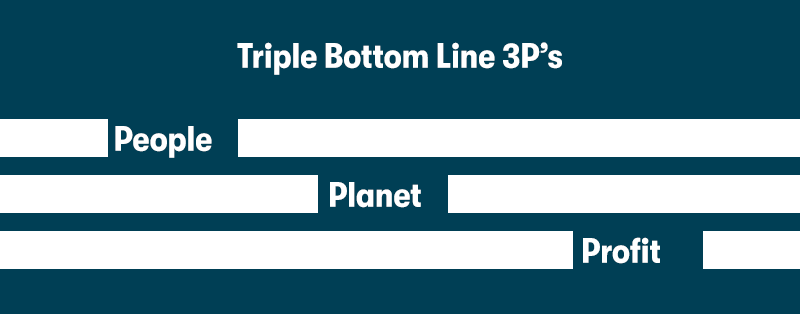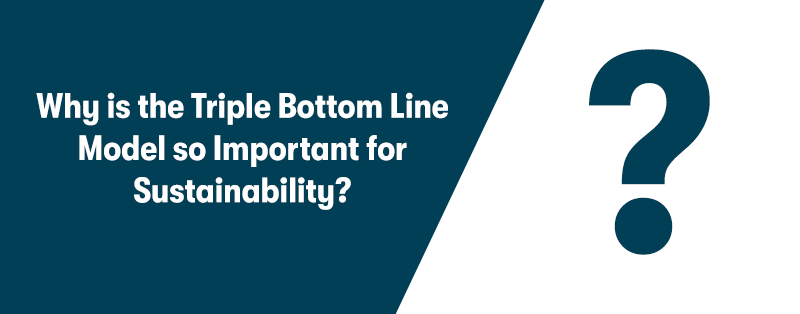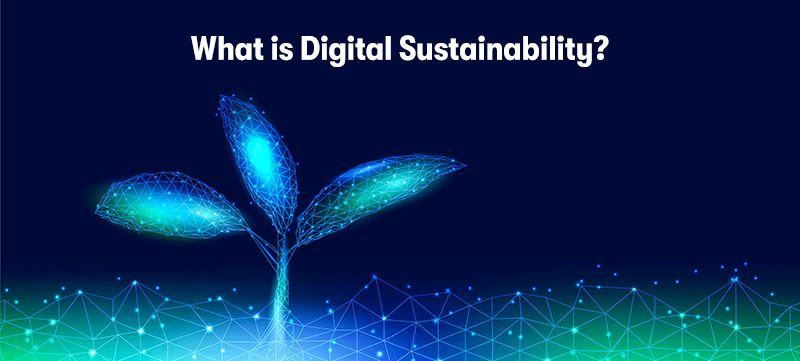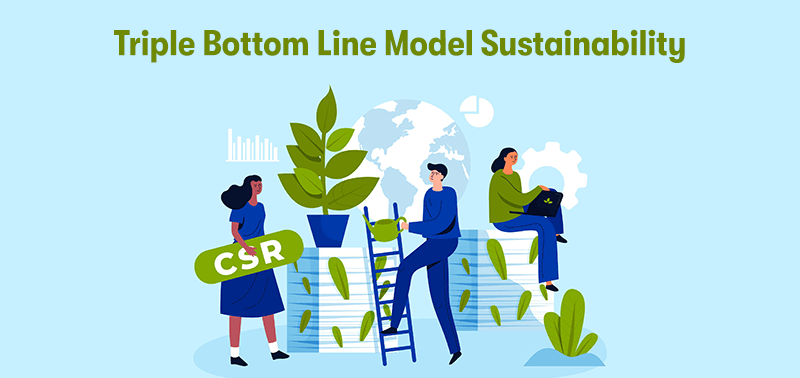Triple Bottom Line Model Sustainability
Welcome to our deep dive into the world of sustainable business practices, where we explore the pioneering Triple Bottom Line (TBL) Model of Sustainability. This revolutionary framework has reshaped how companies view their role in society. Moving beyond the singular focus on financial profits, the TBL model incorporates three critical dimensions – People, Planet, and Profit.
This approach challenges businesses to redefine success by equally prioritising social responsibility, environmental stewardship, and economic viability. As we unravel the intricacies of this model, we invite you to join us in understanding how it drives sustainable development and fosters a more balanced and ethical approach to conducting business.
What is the Triple Bottom Line Model for Sustainability?
The Triple Bottom Line Model for Sustainability is a framework that expands the traditional reporting framework to take into account ecological and social performance in addition to financial performance. The concept was first introduced by John Elkington in 1994 and is often summarised as "People, Planet, Profit."
The TBL framework encourages businesses to consider the full scope of their impact on the world and to be accountable not just for their financial success but also for their social and environmental footprints. This model is increasingly relevant in global sustainability challenges and corporate social responsibility.
What Are the 3 P's From the Triple Bottom Line Model?

The 3 P's from the Triple Bottom Line model refer to People, Planet, and Profit. These three pillars are designed to help businesses measure their success not only in terms of financial performance but also in terms of their social and environmental impact. Here's a brief overview of each:
People
This pillar focuses on the social responsibility of a business towards its employees, customers, and the communities where it operates. It emphasises the importance of fair and ethical treatment of labour, contribution to community development, and overall enhancement of quality of life for those impacted by the business. This includes fair labour practices, community engagement, and ensuring that the business operations do not harm the social fabric.
Planet
This aspect concerns the environmental impact of a business. It promotes sustainable environmental practices, urging businesses to minimise their ecological footprint. This includes reducing waste, pollution, and carbon emissions, using sustainable materials, and conserving natural resources. The goal is to ensure that business activities do not detrimentally impact the environment, preserving it for future generations.
Profit
While traditional business models primarily focus on financial gains, the TBL model incorporates profit as one of three equally important pillars. Here, profit is about achieving economic viability and success, but in a way that doesn't compromise social and environmental responsibilities. It encourages businesses to be financially successful while contributing positively to society and the environment.
The Triple Bottom Line model thus encourages businesses to adopt a more holistic approach to success, balancing the need for financial profitability with the necessity of being socially responsible and environmentally sustainable.
Why is the Triple Bottom Line Model so Important for Sustainability?

The Triple Bottom Line model is crucial for sustainability for several reasons, as it redefines the traditional notion of business success and encourages a more holistic approach to assessing and managing the impact of business activities. Here are the key reasons why the TBL model is important for sustainability:
Holistic View of Impact
TBL encourages businesses to go beyond just financial performance and consider their social and environmental impacts. This broader perspective is essential for sustainable development, as it acknowledges that long-term business success is interconnected with healthy societies and ecosystems.
Encourages Long-term Thinking
The TBL model promotes long-term planning and sustainability by focusing on immediate financial gains and social and environmental outcomes. It helps businesses to identify and mitigate risks that could jeopardise their long-term success, including environmental degradation and social unrest.
Social Responsibility
The TBL framework emphasises the importance of businesses being responsible members of society. This includes fair labour practices, community engagement, and contributions to societal well-being. By doing so, businesses can help to build more equitable and just societies.
Environmental Stewardship
The TBL model places a strong emphasis on reducing negative environmental impacts. This includes managing resource use more efficiently, reducing pollution and waste, and mitigating the impacts of climate change. Such practices are essential for the preservation of natural resources and ecosystems.
Economic Viability with Ethics
TBL does not dismiss the importance of economic success but integrates it with ethical considerations. It challenges businesses to be profitable while behaving ethically towards people and the planet, thus redefining what it means to be economically successful.
Enhanced Reputation and Trust
Businesses that adopt the TBL approach can improve their reputation and build trust among customers, employees, and stakeholders. This can lead to increased customer loyalty, better employee retention, and a stronger social license to operate.
Adaptation to Changing Market Trends
As consumers and investors become increasingly concerned about sustainability, businesses that embrace the TBL model are better positioned to meet these evolving market demands and expectations.
Compliance and Risk Management
The TBL framework helps businesses stay ahead of regulatory trends focused on sustainability and social responsibility, reducing legal and reputational risks.
In summary, the Triple Bottom Line model is essential for sustainability as it promotes a more comprehensive and responsible approach to business that is crucial for our planet's and society's well-being, both today and in the future.
How Can You Implement the Triple Bottom Line in Your Business?
Implementing the Triple Bottom Line in your business involves a holistic approach to sustainability, encompassing social, environmental, and economic aspects. Here's a step-by-step guide to help you integrate the TBL framework into your business operations:
Step 1: Understand and Commit to the TBL Principles
Educate yourself and your team about the TBL concept: People, Planet, and Profit.
Secure commitment from top management as sustainability initiatives often require a shift in corporate culture and business practices.
Step 2: Assess Your Current Impact
Conduct an audit of your current business practices regarding their social, environmental, and economic impacts.
Identify areas where your business can improve regarding sustainability and social responsibility.
Step 3: Set Clear Goals and Objectives
Set specific, measurable, achievable, relevant, and time-bound (SMART) goals for each TBL pillar.
These goals should align with your business's mission and values.
Step 4: Develop Strategies and Policies
Develop policies and strategies that reflect your commitment to each aspect of the TBL.
This may involve adopting new business practices, developing new products, or changing how resources are managed.
Step 5: Engage Stakeholders
Engage with employees, customers, suppliers, and the local community to gain insights and support for your TBL initiatives.
Communication is key: clearly articulate your sustainability goals and how stakeholders participate in these efforts.
Step 6: Implement Changes
Start with easy wins to gain momentum and move on to more complex initiatives.
This could involve changing supply chain practices, investing in energy-efficient technologies, or implementing employee welfare programs.
Step 7: Measure and Report
Develop a system for measuring your performance in each TBL area.
Regularly monitor and report on your progress. This can be through sustainability reports, internal dashboards, or public disclosures.
Step 8: Continuously Improve
Sustainability is a journey, not a destination. Continuously look for ways to improve.
Stay informed about new sustainability practices and technologies.
Step 9: Foster a Culture of Sustainability
Encourage employees at all levels to contribute ideas and participate in sustainability initiatives.
Offer training and resources to help employees understand and implement sustainable practices in their work.
Step 10: Collaborate and Innovate
Collaborate with other businesses, non-profits, or governmental organisations to enhance your sustainability efforts.
Be open to innovative approaches and solutions that may challenge traditional business models.
Implementing the TBL framework requires a genuine commitment to sustainability and often involves rethinking how business is conducted. It's not just a one-time effort but a continuous process of improvement and adaptation.
What is Digital Sustainability?

Digital sustainability refers to the practice of designing, implementing, and using digital technologies in a way that supports and enhances the broader goals of sustainability. This concept encompasses several key aspects:
Energy Efficiency and Reduced Environmental Impact
Digital sustainability focuses on minimising the environmental footprint of digital technologies. This includes reducing energy consumption in data centres, using renewable energy sources, implementing energy-efficient hardware and software, and reducing electronic waste through recycling and responsible disposal.
Social Inclusivity and Accessibility
Ensuring digital technologies are accessible to all segments of society is a crucial aspect of digital sustainability. This means designing inclusive products and services, considering people with disabilities, and closing the digital divide by making technology accessible to underprivileged or remote communities.
Ethical Use of Technology
This involves using digital technologies in ethically responsible ways, such as ensuring user privacy and data security and not contributing to harmful practices like misinformation or digital addiction.
Long-Term Viability
Digital sustainability also involves creating technologies and digital solutions that are durable, easily updated, and maintainable over time, thereby reducing the need for frequent replacements and contributing to a reduction in e-waste.
Economic Sustainability
In the digital realm, this means creating business models that are economically viable without being exploitative or leading to negative social or environmental impacts. This includes fair labour practices in the tech industry and ensuring the digital economy doesn't exacerbate economic inequalities.
Supporting Broader Sustainability Goals
Digital technologies can be powerful tools in advancing broader sustainability goals. For example, data analytics and IoT (Internet of Things) can be used to optimise energy use in buildings, AI can help in efficient resource management, and blockchain can enhance supply chain transparency.
Digital sustainability is an evolving field, increasingly recognised as critical in the context of global sustainability challenges. As our reliance on digital technologies grows, ensuring these technologies support and do not hinder sustainability efforts becomes ever more important.
Where Can You Learn More About Digital Sustainability?
At Purple Griffon, we offer an ITIL® 4 Specialist Sustainability in Digital & IT (SDIT) training course. This course will help you to:
- Understand how to use the ITIL guiding principles to deliver value by creating sustainable digitally enabled products and services.
- Effectively address VUCA challenges through sustainable strategies, procurement, products and practices.
- Obtain a practical grounding in the key principles of sustainability.
- Conduct a complete cost-benefit analysis identifying potential risks and opportunities using best practice guidance.
Final Notes on the Triple Bottom Line Model and Sustainability
In conclusion, our exploration of sustainability in the business context, particularly through the Triple Bottom Line model, underscores the imperative for a holistic approach to success. The TBL model, emphasising the three Ps - People, Planet, and Profit, offers a framework for businesses to balance economic viability with social responsibility and environmental stewardship.
Furthermore, we delved into the nuances of digital sustainability, highlighting the critical role of technology in fostering sustainable practices. As we advance, it is clear that integrating sustainability into core business strategies and digital innovations is not just a moral imperative but a strategic one. Businesses that embrace these principles are poised to lead the way in building a more sustainable, inclusive, and prosperous future for all.


